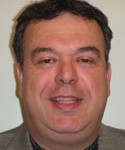
By Micha Shalev
A stroke can be dramatic—and devastating. As part of the brain is starved of its blood supply, cells may die. If a large number of brain cells die, with them may go some of a person’s ability to speak, move, and remember.
Yet there is also another type of stroke—one that is far subtler and harder to spot. Termed a “silent stroke,” it creates areas of damage in the brain. These areas of dead brain cells are smaller than with a traditional stroke and they impact less-functional areas of the brain, but researchers are finding that they can still have a significant and lasting impact on memory.
Silent strokes are actually far more common than strokes with symptoms. For every person who has a stroke with symptoms, about 14 others have a silent stroke. Researchers estimate that more than one-third of people over age 70 have had a silent stroke.
The most common depiction of a stroke is a person unable to move one side of their body, often accompanied by with slurred speech. But studies show that many stroke victims have had silent strokes previously that, as the name indicates, went unnoticed. The damage caused by the silent stroke, however, can be seen through advanced imaging techniques.
Though a woman may not notice any immediate effects, a silent stroke could interrupt the flow of information in her brain needed for memory, especially if several of these strokes occur over time (which is the most common scenario).
In a study published in the January 3 issue of the journal Neurology, researchers looked at more than 650 people without a history of dementia. Using MRI scans, the study’s authors tracked interruptions in blood supply to the participants’ brains. More than 170 of the participants were found to have small areas of dead tissue from a lack of blood supply (called infarcts) in the brain, even though only 66 of them reported having had symptoms of a stroke. People with these brain infarcts had difficulties with memory and mental processes (cognition). The memory issues occurred independent of any shrinkage of the hippocampus (the part of the brain responsible for memory)—which is typically seen with Alzheimer’s and other forms of age-related memory loss.
Since no one is suggesting that everyone get an annual brain scan, the next best thing is to understand and try to control the risk factors for silent stroke. Several of those risk factors – high blood pressure, atrial fibrillation and blockages in the carotid arteries – are simple to screen for and have effective treatments.
Silent strokes are 30 to 40 percent more prevalent in women than men and the results can be serious. Impaired movement, muscle weakness, depression, memory problems and cognitive problems are all associated with silent stroke.
If you or your family members have noticed recent changes to your memory facility or mobility, consult with your doctor. In some patients, these have been symptoms of a silent stroke, but in any case it will benefit you to find the root cause and begin treatment.
Does silent stroke lurk in your future? The first step in preventing stroke is knowing which conditions can enhance your risk. If you have any of these conditions, talk to your doctor.
While women experience the classic symptoms of stroke, they can also experience different symptoms that are often dismissed as something else. These include:
- Sudden nausea and vomiting: These symptoms are usually very sudden and are often accompanied by other more common stroke symptoms.
- Pain on one side of the body: In addition to or instead of the traditional numbness or tingling, women often feel pain that can occur anywhere in the body, such as the face, arm, or leg.
- Hiccups: These involuntary contractions of the diaphragm are controlled by nerves in the brain which, when irritated, may cause a stroke. It is unknown why this occurs in women but not in men.
- Extreme exhaustion: Women often experience a sudden fit of sleepiness, such as the urge to lie down and take a nap before a stroke occurs. However, taking a nap is the worst thing you can do when having a stroke since your brain needs to stay active so you can take action and get help right away.
Micha Shalev MHA CDP CDCM CADDCT is the owner of The Oasis at Dodge Park, Dodge Park Rest Home and The Adult Day Club at Dodge Park located at 101 and 102 Randolph Road in Worcester. He is a graduate of the National Council of Certified Dementia Practitioners program, and a well-known speaker covering Alzheimer’s and dementia training topics. He can be reached at 508-853-8180 or by e-mail at m.shalev@dodgepark.com or view more information online at www.dodgepark.com.











